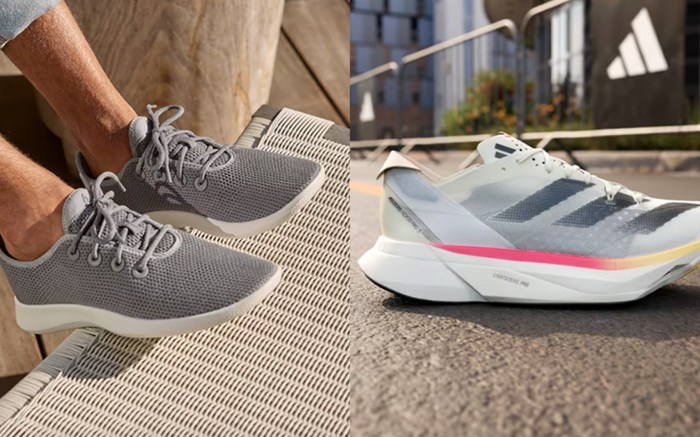Nike‘s chief executive officer John Donahoe has a new reason to explain the company’s innovation lag.
In an interview with CNBC on Friday, Donahoe said the company’s lagging innovation pipeline — which has been widely criticized as lackluster by analysts and the Street in recent months — was because of remote work. Nike shut down its footwear factories in Vietnam for a few months during the height of the Covid-19 pandemic and, like most major companies in the U.S., had its corporate employees working from home for several months as well.
“In hindsight, it turns out, it’s really hard to do bold, disruptive innovation, to develop a boldly disruptive shoe on Zoom,” Donahoe told CNBC. “Our teams came back together 18 months ago in person, and we recognize this. So we realigned our company, and over the last year we have been ruthlessly focused on rebuilding our disruptive innovation pipeline along with our iterative innovation pipeline.”
Watch on FN
The comments came shortly after Nike announced a new round of layoffs in December and a plan to build a “multiyear cycle of innovation” to win over consumers.
But according to analysts, Nike’s innovation problem is deeper than employees being in the office on more days.
Notably, Nike’s remote set-up during and following the pandemic was not unique, explained Matt Powell, advisor at Spurwink River and senior advisor at BCE Consulting.
“There were a whole bunch of brands who really thrived during and post-pandemic even though they were working remotely,” Powell said. “So I’m not sure that we that we can blame remote work here on Nike’s issues.”
What’s more, Nike was one of the first footwear companies to bring its employees back to the office on a hybrid basis in May 2021. And in January, Nike became the first major shoe company to publicly call its employees back to the office four days a week, a departure from the typical three-days-in-office hybrid model most shoe companies had adopted in a post-pandemic world. Other shoe companies like Adidas and Crocs have maintained their flexible hybrid models since the pandemic, and some have thrived while allowing employees to work in a fully remote environment.
“[Nike was] one of the first ones to go back — and much to the chagrin of their employees,” Powell said. “If remote was really an issue for Nike, they should have solved that by going back to the office.”
Nike’s innovation issues, Powell said, stem from the company’s decision to rely too heavily on best-sellers during the pandemic while taking the focus off creating new, unique products.
For its part, Nike has recently touted new products like its Air Max DN as examples of the firm’s strong new innovation pipeline. Nike leadership also called out the new Pegasus Premium, which launches next Spring and features ZoomX foam in the midsole and ReactX foam in the heel, as well as the Pegasus 41 launching this June, the first shoe in that line to feature ReactX foam. But some analysts pointed out these “new” innovations rely too much on existing franchises.
“The brands where fresh product continued to flow — Hoka, On, Brooks and New Balance — their business has been good. Better than good,” Powell said.
In an interview with FN, Williams Trading analyst Sam Poser attributed Nike’s innovation issues to a series of “bad decisions” throughout the last few years, including a broad loss of talent at the company, a decision to lean too heavily on direct-to-consumer and a shift towards making merchandising decisions based on financial goals that hurt brand equity.
“It’s not as open a door at the company as it once was … they’re not listening,” Poser said, echoing a note he wrote to investors in Mid-march that criticized the company’s current C-suite leadership. “Working from home or working in the office, senior management should still be listening.”


